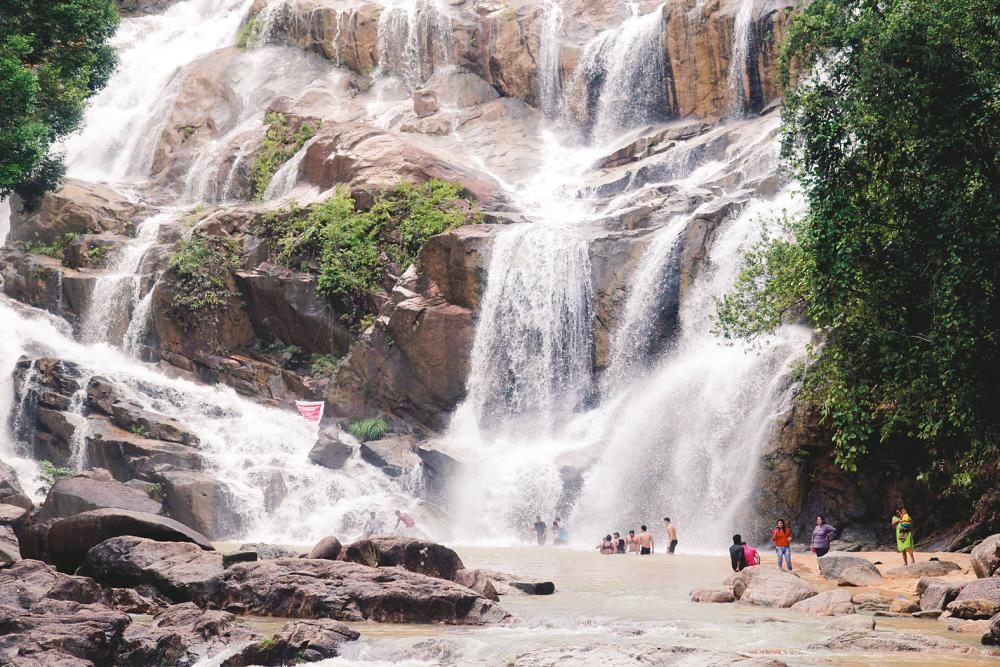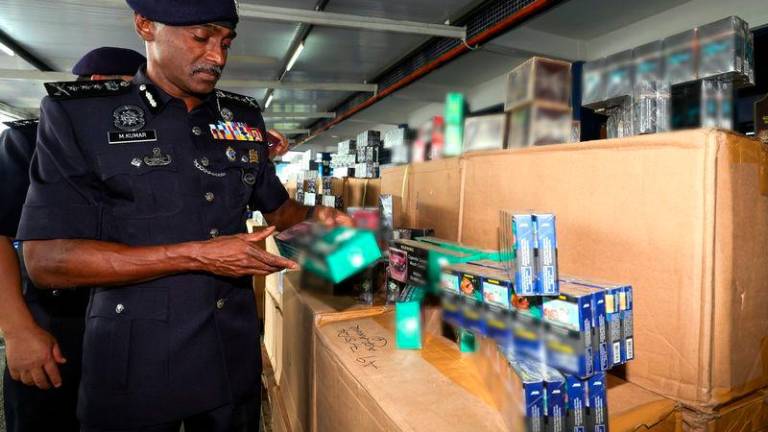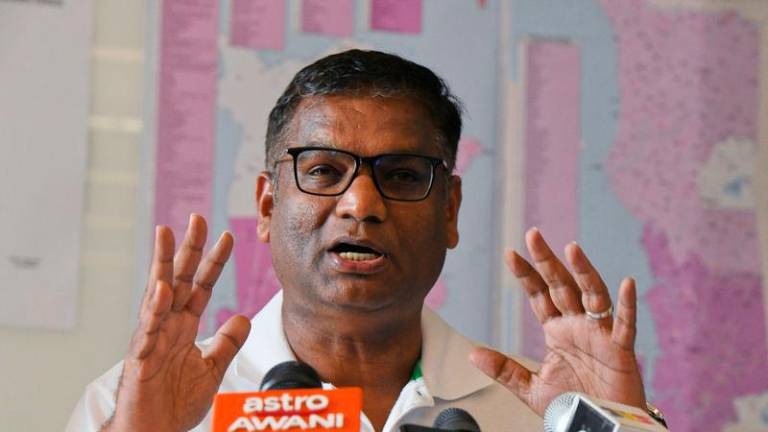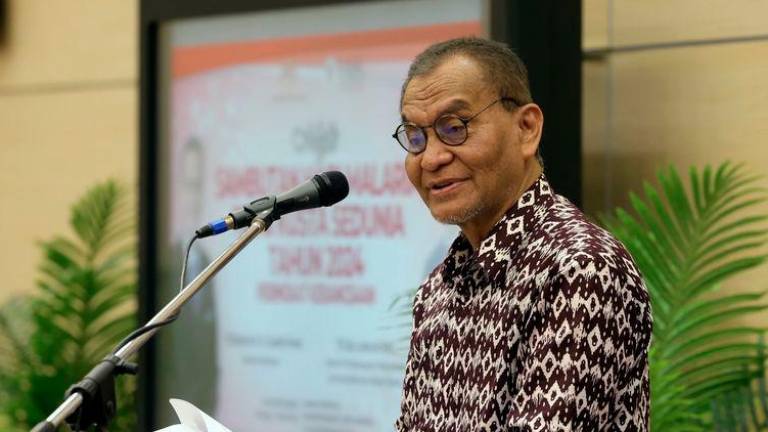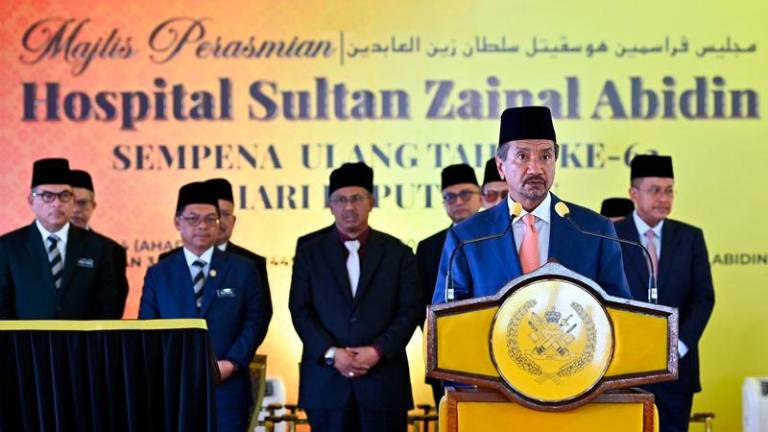WATER security is the most important aspect in the management of water resources and the time has come for the government to give it top priority.
The UN defines water security as the capacity of a population to safeguard “sustainable access to adequate quantities of acceptable quality water for sustaining livelihoods, human wellbeing and socio-economic development”.
Water quality expert Dr Zaki Zainudin says when there is water security there will be no interruptions to supply even when contamination occurs.
He said although the authorities have taken measures to reduce pollution in rivers, which constitute a source of raw water, interruptions in supply are yet to be fully addressed.
Zaki blames weak management of river basins for water disruptions.
“We don’t have a support plan in the event of a disruption in water supply due to the presence of pollutants in river water,” he said.
Due to the vast expanse of river basins, it is imperative the government formulate strategies to ensure sustainable water supply.
Strategies that can be considered are off river storage facilities, protecting water catchment areas and introducing a more sophisticated water treatment system.
Off river storage
While there is a need to have more stringent environmental laws and streamline enforcement, in the short term, however, water security is key to ensuring uninterrupted supply.
Zaki, who was a member of the team that investigated the cause of pollution in Sungai Kim Kim in Pasir Gudang, Johor last year, said water security should not be the focus of just the federal and state governments but also water concessionaires.
One measure states could implement as part of their water security plan is set up storage ponds for emergencies.
He praised Selangor, which through Selangor Water Management Authority (LUAS), has implemented the Hybrid Off-River Augmentation System (HORAS) to use abandoned mining pools as an alternative source of raw water.
“They serve as backup ponds and if contamination occurs in the main raw water supply, water from the ponds can be used.
“The Selangor authorities used HORAS water when contamination occurred in Sungai Semenyih late last year although it (water) was not sufficient,” he said. “However, the water disruption in the Klang Valley would have been worse if not for the backup ponds.”
He said a proposal made some years ago to tap Putrajaya Lake should be given due consideration as it would help to support the Sungai Semenyih water treatment plant (WTP) in an emergency.
Protect water catchment areas
The basin of a river stretches from upstream to downstream and it is the norm to build the WTP downstream due to the higher quantity of water available there.
“The problem is over the years, the upstream areas become increasingly polluted due to rapid development and pollutants flow downstream.
“Let’s take Sungai Semenyih. The area where raw water is pumped into the WTP is downstream (before it meets Sungai Langat). Hence, not surprisingly, the area is prone to pollution due to development that has taken place upstream,” Zaki said.
To guarantee water security, the authorities should gazette water catchment areas as protected zones to prevent activities that can harm rivers, he said.
Zaki called for implementation of a more efficient water treatment system that allows contaminated water to be treated directly without having to shut down the WTP.
The conventional treatment used by Malaysia is also used by the United States, the Netherlands and England, but the system has limitations and is only suitable for treating water that is “not too dirty”.
In the US, the conventional treatment works well because the quality of its water is relatively good as it practises sound river basin management.
“The situation is different in Malaysia due to pollution. Maybe the time has come to consider a more sophisticated treatment system such as used by Singapore, where sewage is treated and recycled into drinking water,” he said.
Carrying capacity of rivers
Zaki, who has done numerous studies on water quality, said rivers have the natural capacity to carry pollutants but their carrying capacity levels depend on their water volume.
If a river is endowed with a high volume of water, its carrying capacity is also high. Likewise, rivers with low water volume have low carrying capacities.
“During a drought, there’s less water flowing in a river. The pollutants that are discharged into the river may be permissible under the law, but it will worsen the pollution level due to the river’s reduced carrying capacity,” he said.
Suggesting that relevant laws in Malaysia be reviewed to take into consideration the carrying capacities of rivers, Zaki said in the US, its laws not only consider the concentration of pollutants in rivers but also their carrying capacities.
Malaysian rivers are categorised into five classes – I, II, III, IV and V – based on the descending order of water quality, with Class I considered good and Class V the most polluted.
However, the water quality will differ from segment to segment depending on the level of pollution. For example, the downriver segments will be more polluted than the upstream portions due to the higher level of human activities.
Zaki proposed that state governments, which have jurisdiction over the rivers in their states, ascertain and fix the water quality of each segment.
“The river must be mapped to indicate the water quality for each segment. Before approving any development project in an area, the authorities must ensure that it will not worsen the water quality in the segment concerned,” he said.
According to Zaki, it is “immensely difficult” to improve the water quality of a polluted river. However, he said, steps can be taken to “maintain” the existing quality and prevent it from getting worse.
“Let’s take a Class II river as an example. The authorities must make sure that in five years’ time, it remains in Class II and does not get downgraded to Class III. Believe me, in five years, a river can get downgraded if new development projects crop up and more pollutants are discharged.
“This is why I am stressing that the authorities should ascertain and fix the water quality (in various segments of the river) and ensure that the quality is maintained.” – Bernama
The article was translated from Bahasa Malaysia into English by Rema Nambiar.



